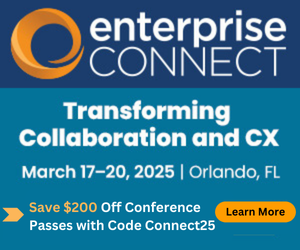What’s RPA, Why Should I Care?What’s RPA, Why Should I Care?
While robotic process automation is in its infancy, contact centers are finding its promise for streamlining workflows and reducing costs.
August 6, 2019

A core consulting engagement that we perform is the “Strategic Operational Assessment.” This engagement type generally focuses on the customer experience, and specifically how operations in the contact center and in other areas of the organization impact that experience.
A typical engagement includes at least four to five days of on-site client meetings. The first activity we perform on-site is to sit side-by-side with contact center agents. During these sessions, we listen to customer phone calls, watch digital interactions, and observe how an agent resolves customer questions and issues. In these meetings, we might investigate what systems an agent uses, how many times an agent places the caller on hold, and whether the agent needs to transfer the call to complete the request.
A significant factor, particularly in healthcare, financial services, and insurance contact centers, is the amount of manual effort required to satisfy customer needs. Often, an agent must invoke multiple processes and engage multiple systems during the interaction.
You might ask, “So what?” Here’s “what.” The manual nature of these interactions has enormous impacts on productivity, customer satisfaction, and importantly, cost per interaction. Specifically, here is what can happen:
Average contact handle time (talk/interaction time and after contact time) lengthens.
Agent success in completing the interaction to the customer’s satisfaction depends on the effectiveness and consistency of the training received. This varies tremendously among our clients.
The agent’s experience and ability to effectively handle all components of the interaction has a direct correlation on the customer’s satisfaction (or frustration) levels.
Potentially, a company can experience an impact to customer satisfaction and Net Promoter Score (NPS) surveys. Worse yet, in the day and age of social media, a company’s image can take a severe hit through consistent negative posts regarding customer service.
Can RPA Help?
In order to understand this and the potential power of the technology, let’s turn to the Gartner Magic Quadrant for Robotic Process Automation Software report, published July 8.
To quote the report, “Robotic process automation (RPA) is a digital enablement technology that predominantly leverages a combination of user interface (UI) and surface-level features to create scripts that automate routine, predictable data transcription work. RPA tools link applications, eliminating keying errors, speeding up processes and cutting costs. As a market, RPA is still relatively small, with a total revenue of slightly less than $850 million in 2018. However, RPA is the fastest-growing software subsegment officially tracked by Gartner, with year-over-year growth of more than 63% in 2018.”
What’s different about RPA? In the same report, Gartner stresses the appeal of the technology.
“RPA has effectively bypassed the traditional IT buyer, appealing directly to business users, with its emphasis on resource reduction, easy efficiency and accessibility of scripting environments.”
Furthermore, Gartner states that because of the focus on streamlining operations, with resultant lower costs, “business executives are lining up to sponsor new RPA initiatives directly within their functions.”
Misconceptions and Challenges
Organizations looking to slash headcount by using the technology should consider some critical facts about what RPA is and isn’t. While organizations should be able to improve operational efficiency and perhaps eliminate some headcount through more effective contact handling, RPA won’t completely supplant customer interaction with live agents. Here’s why:
RPA scripts can get information in and out of back-end systems, but they aren’t equivalent to the humans who interpret the data and react as needed.
RPA scripts are intended to run repetitive and routine “tasks” and simple workflows. Multiple step tasks or workflows that involve multiple processes aren’t the right fit for RPA. Those require more highly sophisticated tools.
RPA tools don’t “fix” outdated or inefficient workflows; they simply replace the human interaction with the existing systems and applications that provide the required information.
Technology Is Just the Start
RPA is in its initial stage of development, and already the market wants more functionality. Machine learning is the next area that RPA solution providers are looking to leverage.
“Given the rapid growth in the market, we have seen a great deal of investment activity in the leading vendors,” Gartner wrote in its report.
Research firm Ovum, too, is keeping its eye on RPA activity. “If the current growth trends are anything to go by, RPA adoption will continue to accelerate, with more and more enterprises adopting RPA platforms for task and process automation. RPA as a technology discipline is evolving to support the automation of increasingly sophisticated processes, and along with business process management suites (BPMS)/case management and artificial intelligence (AI)/machine learning (ML) capabilities, it forms a good combination for end-to-end process automation,” Ovum wrote in a December 2018, report, “Ovum Decision Matrix: Selecting a Robotic Process Automation (RPA) Platform, 2018 – 19.”
Clearly, with the attention of business leaders and the investment in technology, RPA has enormous potential to significantly impact operations not only in the contact center but in other areas of the organization.
Who Are the Leading Solution Providers?
Gartner and Ovum generally agree on the major players in the RPA arena. They are, in alphabetical order:
Ovum includes Pegasystems as a Leader; Gartner has this company in the Visionary category.
How Do You Get Started with RPA?
As with anything, you must start with a plan:
Understand your business, technical, fiscal, and operational objectives before initiating an RPA project.
Ensure the right leadership team supports the initiative.
Get the right people involved to identify your major operational issues. Don’t forget the importance of people who are on the front lines and directly impacted by those pain points. Their insight could be invaluable.
Prioritize the “pain points” that you are targeting for an RPA initiative, e.g., productivity, customer satisfaction, costs.
Think about what steps you might take to improve the workflow before you automate the task and simplify workflow.
Consider the “spider legs” of change.
How will training have to change?
How do performance metrics have to change?
How can you get the staff to embrace the change?
RPA’s Potential Is Real
The potential to make a huge impact on streamlining operations with RPA is enormous. However, you can’t skip the preparatory work required for the technology implementation. As identified above, that includes understanding objectives, enlisting the right project sponsorship, defining success factors, and realistically assessing the challenge. Don’t minimize these factors when considering RPA design and implementation.
"SCTC Perspectives" is written by members of the Society of Communications Technology Consultants, an international organization of independent information and communications technology professionals serving clients in all business sectors and government worldwide.
About the Author
You May Also Like





